The NS range receives its most significant update yet and we were at the scene to make an assessment.
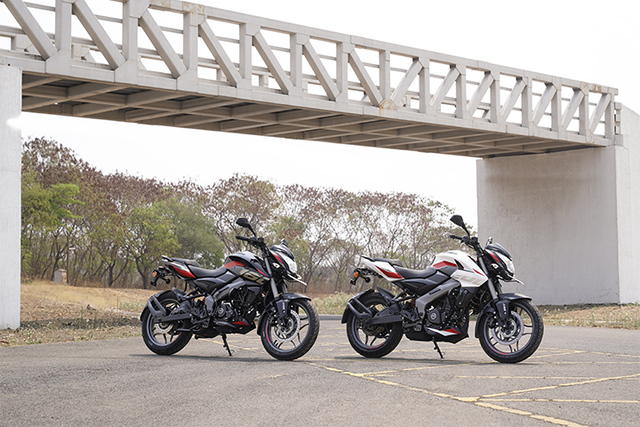
Story: Joshua Varghese
Photography: Sanjay Raikar
Bajaj Pulsar NS 200
The revolutionary Bajaj Pulsar NS 200 was launched in India a little over a decade ago. It was a motorcycle that re-defined accessible performance in the 200-cc segment. The formula that made it so exciting continued mostly unaltered until now. The latest NS 200 comes armed with new componentry that feels right at home in this street motorcycle. On paper, the new upgrades pack noteworthy potential and we got an opportunity to sample it at the company’s test facility.

The NS 200’s styling remains largely unaltered and it continues to feature the minor updates it received over the years. The new graphics set this motorcycle apart from its predecessors but the popular white paint scheme has been retained. There is an instant sense of aggression about this latest avatar and the credit for that goes to the newly added upside-down (USD) fork. Although it is a major change in terms of suspension componentry, its overall visual effect feels rather subtle simply because the NS always was capable of pulling off the look. Last on the list of updates that have aesthetic influence are the new wheels and brakes. Borrowed straight from the 250 Pulsars, they are crucial in this NS’ three-kilogram weight loss, of which the wheels alone are responsible for a kilo.

The instrument cluster layout remains largely similar to the outgoing motorcycle’s but its software and features have been developed to match the Pulsar 250’s. In addition to the previous features, this console also displays information including gear position, distance-to-empty, and real-time fuel efficiency. The riding position remains the same as does the level of comfort.
Mechanically, nothing has changed in the engine of the NS 200. It continues to draw motive force from a 199.5-cc, four-valve, liquid-cooled, single-cylinder engine that develops 24.5 hp at 9,750 rpm and a peak torque of 18.74 Nm at 8,000 rpm while being mated to a six-speed transmission. Power delivery and throttle response remain the same as before, allowing this Pulsar to retain the excitement it is popular for. The NS 200’s riding dynamics are largely similar to its predecessor’s with notable improvements during corner entry and hard braking thanks to a significant reduction in its unsprung weight.
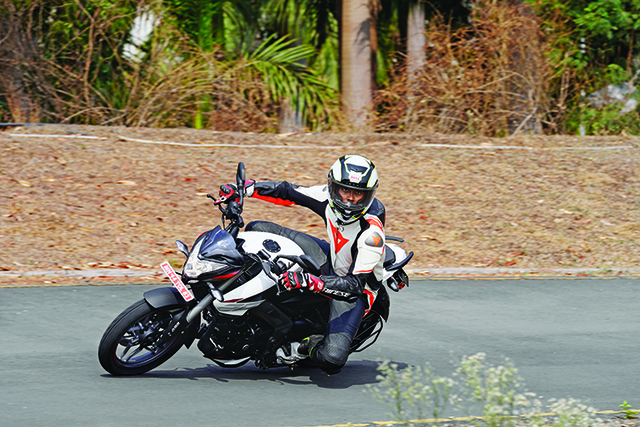
Thanks to its rather small wheelbase, the NS 200 was always an agile motorcycle and whatever wrinkles it had in terms of turn-in stability have been ironed out. During corner entry, the front end is more composed than before, enabling the rider to turn into the curve at a good pace and with greater confidence. This has allowed the NS to offer a more rewarding cornering experience which is currently only limited by the foot-pegs. With a large 300-mm disc at the front, deceleration is rapid and the new fork handles the dive in a pliant and stable manner with MRF tyres completing the interface between brain and bitumen. The difference is noticeable and certainly positive for the NS 200’s handling and stability. Furthermore, this motorcycle now gets dual-channel ABS as standard, which is a welcome addition.
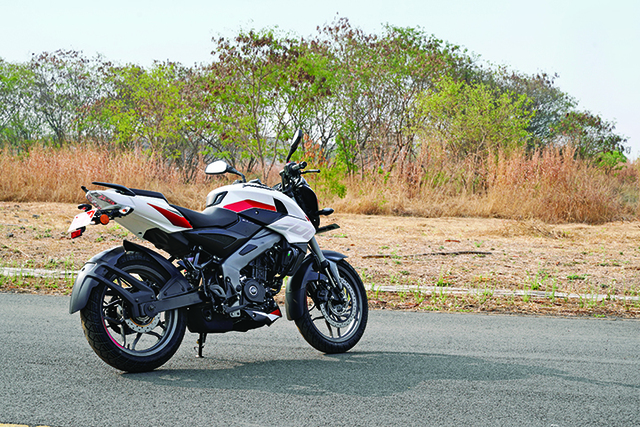
In its latest iteration, the NS has improved significantly in terms of handling, braking, and safety. Moreover, this package does not exact an eye-watering premium. The new NS 200 costs Rs 1.47 lakh (ex-showroom) and continues to be an exciting motorcycle even today.
Bajaj Pulsar NS 160
The Bajaj Pulsar NS 160 has always been a motorcycle that is just right for beginners to join the “NS” ranks. Featuring its larger sibling’s looks and an engine that is both easier to manage and somewhat frugal in town, it offers a best-of-both-worlds proposition. During this round of upgrades, the NS 160 has also received the same ones as the NS 200.
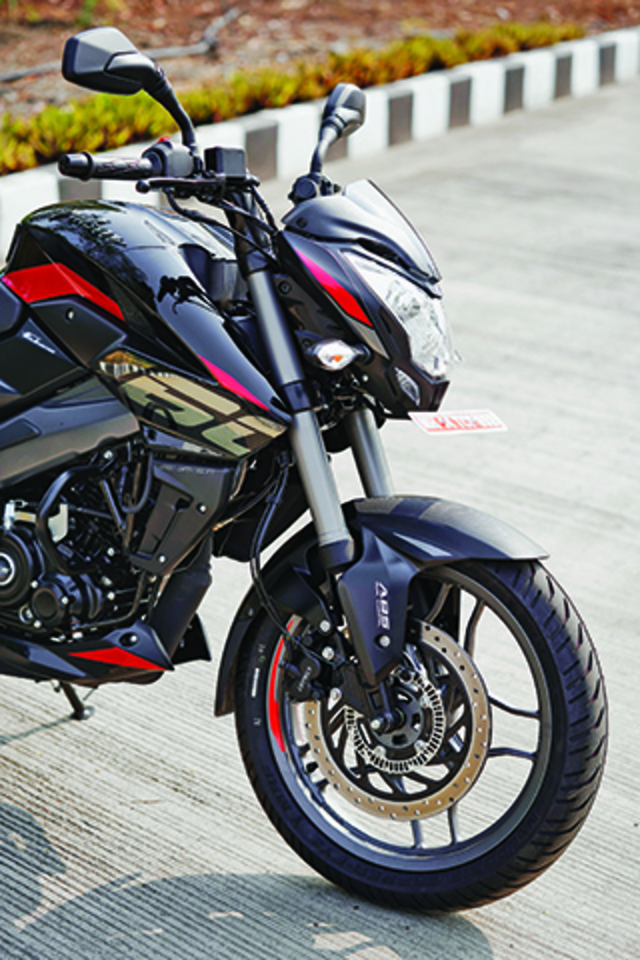
Once again, the styling remains identical to the previous-generation motorcycle, different only due to the latest graphics. The absence of a radiator is otherwise the only thing to tell this motorcycle apart from its larger sibling because, with the new wheels, both motorcycles are now running the same tyre sizes. So, just like the 200, this one also has enough character to pull off the butch stance that is subtly amplified by the addition of the USD fork.
The instrument console of the NS 160 has been updated as well to match the features offered by the 250 Pulsars. Gear position indicator, distance-to-empty, and real-time fuel efficiency are among the new readouts in this update. The riding position remains unaltered: a comfortable and upright stance with a hint of sportiness.
Power for the NS 160 comes from a 160.3-cc, four-valve, air-cooled (with oil-cooler), single-cylinder engine that develops 17.3 hp at 9,000 rpm and a peak torque of 14.6 Nm at 7,250 rpm. It is mated to a five-speed transmission. The engine characteristics remain the same with a strong mid-range and free-revving nature. It is also decently frugal; Bajaj claim as much as 45 km/litre in terms of fuel efficiency.
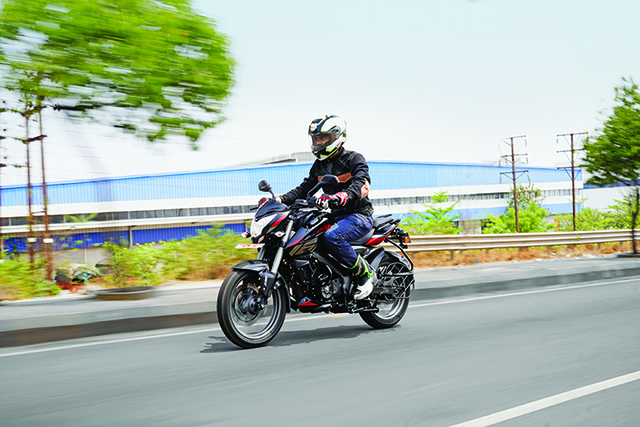
Unlike the NS 200, the addition of the USD fork, new wheels, and new tyres have actually increased the weight of the NS 160. This motorcycle is now a kilogram heavier than its predecessor but the effect of this increase is barely noticeable in the overall handling. That is probably because it now handles slightly better than before. The USD fork adds to composure while cornering and improves stability while braking, allowing the rider to exploit the motorcycle’s limits with greater confidence.
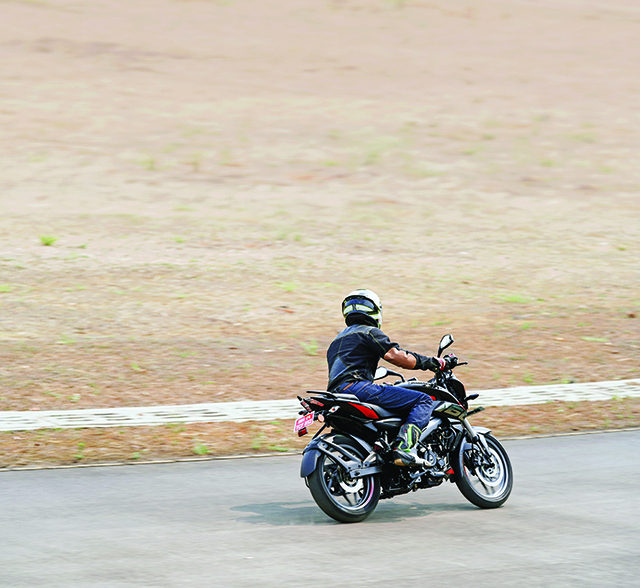
Although it shares most of its chassis with its larger sibling, the swing-arms are different and this one gets the longer unit, giving it a slightly longer wheelbase (1,372 millimetres). So, while it is quite stable in a straight line, it is not as agile as the NS 200. The new 300-mm disc at the front and 230-mm disc at the rear provide remarkable stopping power and, thankfully, they are now supplemented by the safety of dual-channel ABS as standard, which is a step in the right direction.
These new updates are significant for the NS range, no doubt, but I feel they are most crucial for the NS 160 because it instantly elevates this motorcycle’s position in its segment. With all of these changes, the NS 160 costs Rs 1.35 lakh (ex-showroom) and, honestly, that is a reasonable price for the kind of kit on offer.
Also Read: Ducati Diavel V4 Review

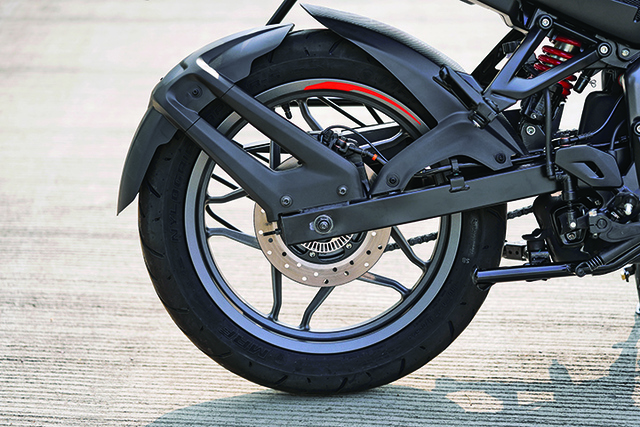
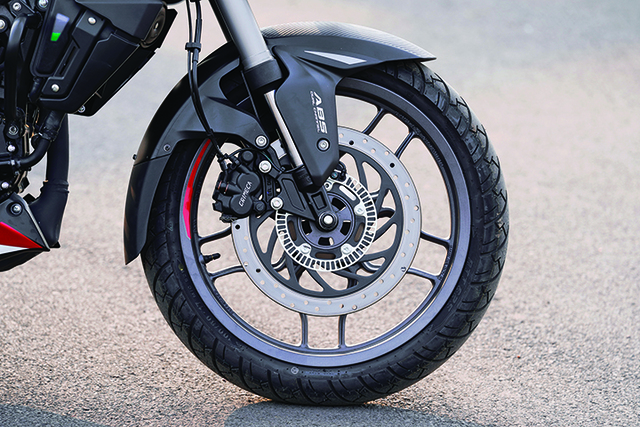

Leave a Reply